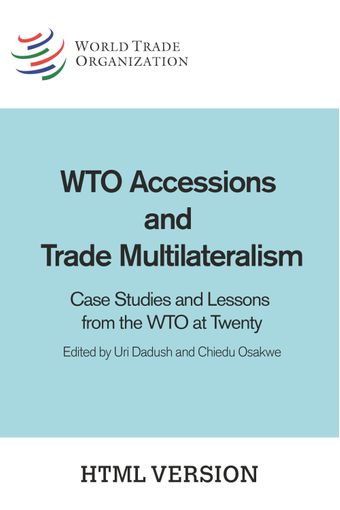The 2013 WTO accession of Tajikistan: Experience of a landlocked economy in a changing regional economic configuration

- De : Saidrahmon Nazriev
- Source: WTO Accessions and Trade Multilateralism , pp 25-25
- Publication Date: janvier 2015
- DOI: https://doi.org/10.30875/9cadcdb0-en
- Langue : Anglais
Tajikistan was part of the Great Silk Road, a system of caravan routes connecting Eurasian countries between the second century BC and the fifteenth century AD. The development of trade throughout Central Asia encouraged the people of this region to adapt to the demands and requirements of consumers thousands of kilometres away, both in western Europe and in China. Tajikistan’s principal rationale for seeking WTO membership was to gain access to new markets and secure the General Agreement on Tariffs and Trade/WTO right of freedom of transit, reinserting Tajikistan into trading routes, comparable to its location in the historic Great Silk Road system. By becoming a member of the WTO in 2013, Tajikistan is opening up new markets for its goods, just as it did several centuries ago. Tajikistan sought WTO membership to sustain domestic reforms. Domestic reforms entailed enactment, repeal and/or amendment of approximately one hundred laws and regulations. In the experience of Tajikistan, successful negotiating factors included, inter alia, a technically competent negotiation team, support from WTO members, strategically defined negotiating objectives, accompanied by a strategy for cooperation. Post-accession considerations should be part of an accession strategy. This chapter outlines Tajikistan’s road to the WTO.
-
From This Site
/content/books/9789287046796s009-c023dcterms_subject,pub_countryId-contentType:WorkingPaperSeries -contentType:Periodical -contentType:BookSeries -contentType:ReportSeries105


